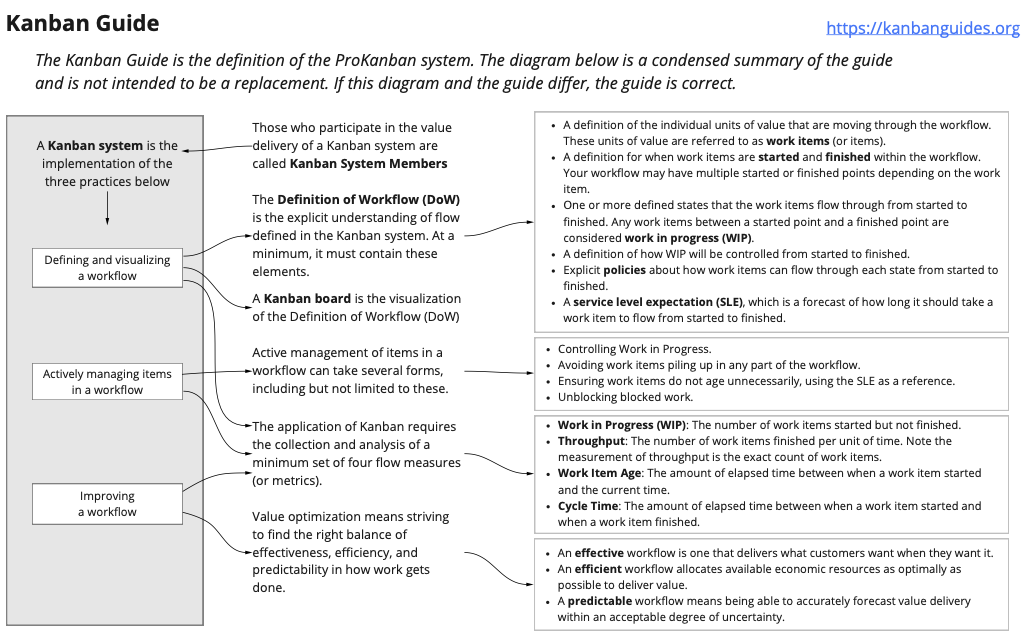We meet a lot of teams who say they’re doing Kanban and yet are only scratching the surface and not getting the benefit from Kanban that they could. They’re moving some cards across a board and think that’s all they have to do. Because it appears so simple, it doesn’t occur to them to reach out for assistance. Why would I need training or coaching to move some tickets around?
Kanban is simple but it’s not always obvious, and there are a number of specific things that we have to do to get the benefits we want. The full description is in the Kanban Guide but I’ll call out some specifics here. We must…
- Define and visualize the workflow. That definition has six specific pieces to it from defining the types of work that flows through the system to deciding how we’re going to manage the amount of work in progress.
- Actively manage the workflow. Ensure that work is always flowing and that involves several specific things from unblocking work that has become blocked, to ensuring that work items do not age unnecessarily.
- Improve the workflow. Improvement is always a balance across effectiveness, efficiency, and predictability and we have to keep all three in mind.
These three seem extremely simple and yet many teams who claim to be doing Kanban either don’t do them at all or don’t do them well. Teams that are just moving sticky notes have usually done the visualization but nothing else and you won’t get the benefits without all of it.
If you find that work just isn’t getting completed then you aren’t actively managing the workflow. Whenever I hear a team saying “we tried kanban and it didn’t work for us”, then every time, I find they weren’t doing this practice. Actively managing the workflow means that we focus on getting work done. That we take whatever steps are required to ensure work doesn’t get blocked or stalled.
If you don’t know when larger chunks of work will be finished then you’re likely not using probabilistic forecasting, a very common practice in Kanban. Or maybe you aren’t keeping an eye on the four required metrics: cycletime, throughput, work in progress (WIP), or work item age. Maybe you haven’t improved the workflow with an eye towards predictability.
If your board looks the same today as it did last year then you likely aren’t improving the workflow.
All of this is applicable to a single workflow and when you want to look across teams or across workflows then you’re getting into portfolio kanban.
Kanban is actually quite simple but as you can see, it’s far more than just moving some sticky notes on a board. To get the real benefits, you need to be doing the rest of it.

